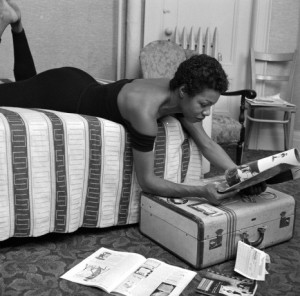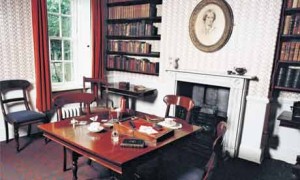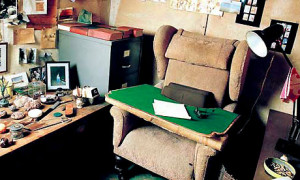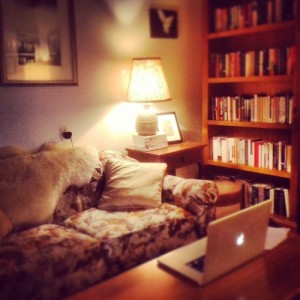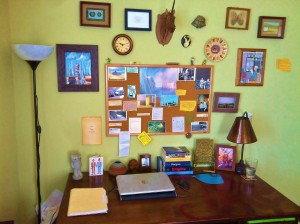Cutbank’s The Woodshop slips into the workspaces and habits of writers we admire. Alice Munro wrote many of her stories in her laundry room. Isabel Allende keeps clippings of newspaper articles and scribbled notes of stories she hears from friends, to later turn into fiction. Leyna Krow, our most recent Woodshop correspondent, describes herself as “very much a whenever writer”.
Recently, we spoke with Theodore McCombs, whose debut collection of stories, Uranians, will be published in May 2023 by Astra House Books. Theodore McCombs’s stories have appeared in Guernica, The Magazine of Fantasy & Science Fiction, and the anthology The Best American Science Fiction and Fantasy. Born in Thousand Oaks, California, he is a graduate of the University of California, San Diego, UC Berkeley School of Law, and the Clarion Writers Workshop. He lives in San Diego with his partner and their surly old cat (pictured below), and practices environmental law, with a focus on climate change.
Pre-order Uranians here!
Photo credit: Carly Topazio
Q: What was your writing process while you were working on Uranians? How long did it take to write the collection, and was it written in one location?
TM: These stories came together over a five-year period. I wrote three of them at the Clarion Writers Workshop in San Diego, meaning I drafted each in a week, riding the adrenaline of that intensive schedule and the collective energy of thirty writers all scrambling. The final story, a novella, took me over a year to draft. During that period, I was militant about taking a spiral notebook and some index cards wherever I went, and I worked whenever I could squeeze in an hour. I wrote on the bus, in the park, on my lunch break. I visited a Catholic monastery near Oceanside for some research and wrote in a wonderfully gloomy library until Vespers. Four months into the novella’s first draft, the COVID-19 pandemic hit the U.S., and we went into lockdowns. That pressure of being stuck in a handful of rooms, indefinitely, both your refuge and your padded cell, became an incredible point of access for the story, which follows a long-haul spaceship between Earth and a distant star system.
That novella’s process was a more structured version of the frustrating, crazy-quilt dicking around and scrabbling I used for the other stories. I spent months generating material, promising myself none of it would ever see a word processor. In my spiral notebook, I wrote out thirty things about a main character, then thirty facts about the setting, then thirty more facts about the character, and so on, using prompts, flash cards, the Proust questionnaire, anything I could use to press for details. I did most of my research in this generative phase. When I did turn to drafting, I wrote longhand on the right pages of my notebook and reserved the left pages for notes, insertions, and scratch paper. I didn’t type anything until I had a full draft, and even after I did, I re-wrote most of the scenes longhand. Then I printed everything out and marked up the printout by hand. Repeat, repeat. My partner is a ballet dancer, and if I’ve had a good week, we’ll use his Theragun on my writing arm.
McComb’s desk at a sunny window.
Tell us about your day-to-day writing life—are you a morning, afternoon, night, or whenever writer?
TM: I almost only write in the mornings, now. I work full-time as an environmental lawyer, and it’s very fulfilling, but it doesn’t leave much juice for the afternoon and evening shifts.
If it’s just exploratory work through prompts and flash cards, I can usually do a set of those whenever I get a free moment. On some evenings, I’m able to get back into the zone enough for some decent revision work. But if it’s drafting, I’ll always leave that for the first thing in the morning, immediately after I wake. Coffee, no breakfast, ideally no phone, just writing for an hour or ninety minutes, until I have to start work.
My telework schedule, which started during the pandemic, has been a godsend in that respect. On the weekend, I can even go two or three hours, but I’ve found there’s not much point in continuing to write past the third hour. I think I’ve heard the advice from multiple writers to break off when you still have an idea of what to write next, so you can carry that into the following day.
Cat meets Cat meets Cat.
Do you have any totemic objects you keep near you while you write? Do you listen to music while you write?
TM: No totems, but our cat might as well be one. We adore her, we dote on her, we are ridiculous. She’s constantly interrupting my work, angling to settle on my lap or on my notebook, croaking for food, wailing for ice cubes in her water, or demanding I stand guard behind her as she eats. She has bitter feelings for the squirrels that live in the tree opposite my window. She’s a great teacher. Stories are their own animals, right? You’re in a deep, specific relationship with the story you’re writing, and it depends on your skill, patience, intuition, and cleverness, but it’s not there to obey you. A story has its needs and agenda—its own truth. It takes a balance of assertiveness and receptivity in the author to bring it to life, and to keep it alive.
I rarely listen to music while writing, unless I need to block out conversation at a café or on the bus. Sometimes, if I’m working at the computer and the cat’s being bratty, I’ll put on the piano score from Spirited Away and other Ghibli movies to help her calm down. Ambient music does help during revisions, though, so I’ll find one of those monumental four-hour Morton Feldman pieces or a Baroque composer I don’t really like, so I can tune them out.
Do you have any superstitions about writing, or your writing process?
TM: Can I call it a superstition if it’s 100% true? A lot of the psychic work of writing is getting out of your own way, so my rituals are all about helping those anxious, hopeless, critical voices in me settle down and coaxing the voice of the story forward. So: I write in pencil, I cross out entire pages and write on top of the X, I draw random cartoons, I read poetry I don’t really get. I never say anything about a work in progress on social media, I don’t get drunk the night before a hard scene, I go for a jog or do core exercises or wail on a punching bag if I get stuck, I listen to Wagner in the bath. As a gay man in his late thirties, I get to access a fairly broad spectrum of ludicrous expressive modes. It’s useful.
Were there specific books you kept nearby for inspiration as you wrote Uranians?
We spy Joy Williams here, among some excellent lit mags.
TM: There were definitely those books, mostly short story collections, that I consulted for specific craft solutions in writing these stories—how did they achieve their particular effects, etc.—books by Carmen Maria Machado, Ted Chiang, Garth Greenwell, Joy Williams, Samuel R. Delany, Sarah Pinsker, and Steven Millhauser especially. But for inspiration, the Letters of Giuseppe Verdi was the more talismanic, keep-by-the-writing-desk book. I read them as research for the collection’s title story, a literal space opera, but beyond that, they’re an incredible window into the crude, constant failures of art, the struggle, the frustration, the injustice of it all. Soon after Verdi’s first big hit at La Scala, he lost both his children and then his wife in the span of a year, while he was on commission to write a comic opera. Can you imagine? The commission, which Verdi finished, was of course the worst flop of his life. He sat with the orchestra and watched the cognoscenti of Milan whistling and jeering at him, this promising 26-year-old composer who’d just lost his entire family. I mean, Jesus. For the rest of his career, he nurtured a fanatical contempt for audiences—“I accept their whistles,” he said, “on the condition that I am asked to give nothing for their applause.”
Not saying it’s the healthiest place mentally, but it’s a terrific mood to write from.
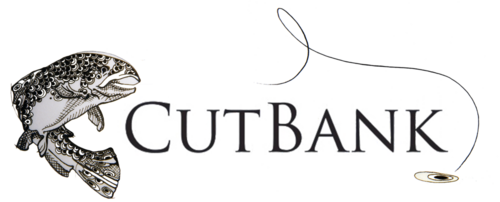











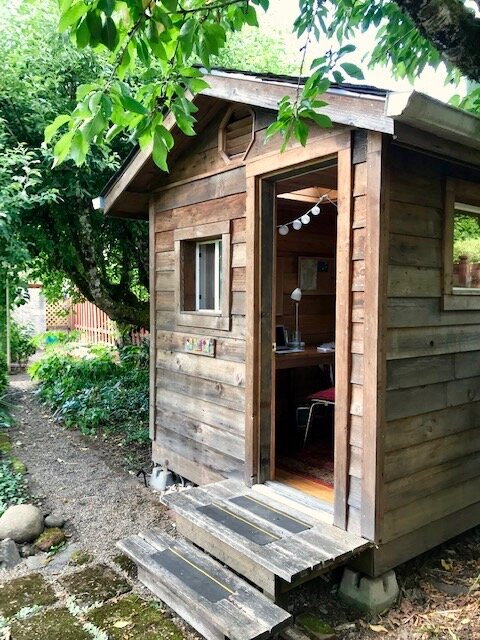




















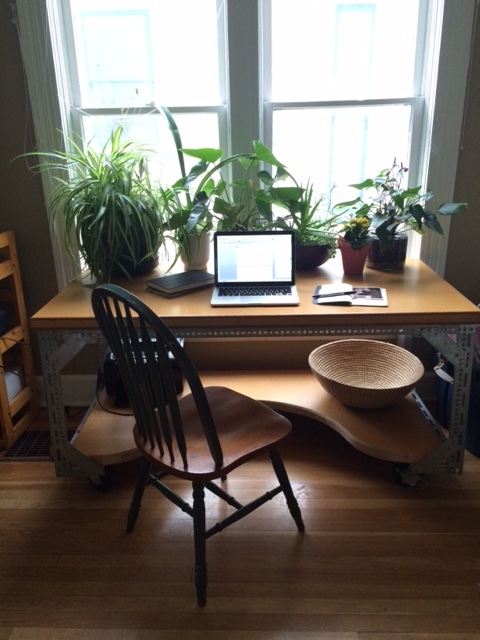
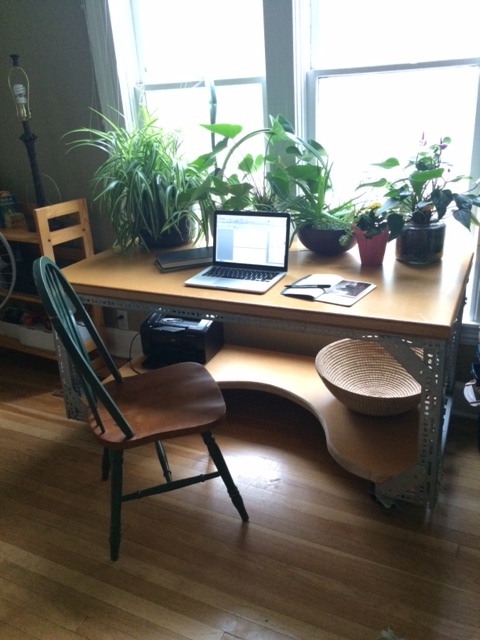
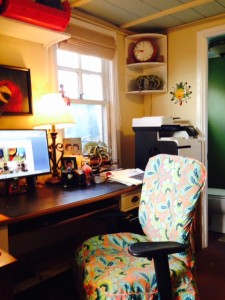 Where do you do your work?
Where do you do your work?
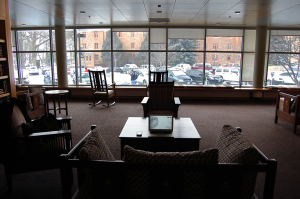 CutBank continues its online feature, The Woodshop, with this submission from Max Vande Vaarst. Review
CutBank continues its online feature, The Woodshop, with this submission from Max Vande Vaarst. Review Where do you do your work ?
Where do you do your work ?